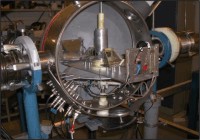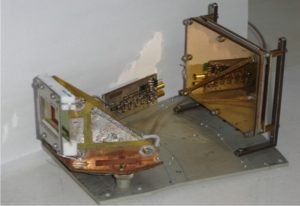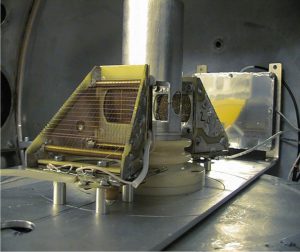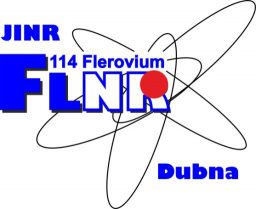“CORSET” double-arm time-of-flight spectrometer (CORSET – CORrelation SETup)

Determination of extreme conditions of atomic nuclei existence is one of the main problems of nuclear physics at present. In heavy ion physics the interest in creation of multi-detector systems has risen considerably with the view of study of properties of large-scale collective nuclei motion, study of time characteristics of interacting nuclei fusion into one complex system and its subsequent decay by fission or formation of evaporating residue. In this connection the CORSET setup was created in the FLNR JINR for study of correlation characteristics of neutron emission, gamma-quantum and fission fragments. It has a high time and positional resolution. The technique has been developed.
CORSET setup allows to measure characteristics of both nuclei spontaneous fission and induced fission processes, quasifission, deeply inelastic, quasielastic and elastic transfer reactions.
CORSET setup is a two-arm time-of-flight position- sensitive spectrometer. Each arm of the spectrometer consists of a MCP (micro-channel plate produced by “Baspik”)-based start detector with electrostatic mirrow and a position- sensitive MCP-based stop detector. Micro-channel plate detectors have a high time resolution, low sensitivity to the magnetic fields, high radiation resistance and a great multiplication factor for input signals.
 ToF-E telescopes are used to measure reaction fragment angular distributions. Each telescope includes start and stop detectors to measure time of flight and surface-barrier silicon detector to measure registered particle energy. Four semiconductor surface-barrier detectors are used to get the differential cross- section absolute values. These detectors are fixed in the reaction chamber at angle of ~150above, beneath, at the left and at the right of the beam axis.
ToF-E telescopes are used to measure reaction fragment angular distributions. Each telescope includes start and stop detectors to measure time of flight and surface-barrier silicon detector to measure registered particle energy. Four semiconductor surface-barrier detectors are used to get the differential cross- section absolute values. These detectors are fixed in the reaction chamber at angle of ~150above, beneath, at the left and at the right of the beam axis.
 CORSET setup above mentioned features allow to measure reaction fragment angular distributions in the range of angles from 50 to 1750. This information is very important for reaction cross-section measurement and for separation of fission and quasi-fission processes.
CORSET setup above mentioned features allow to measure reaction fragment angular distributions in the range of angles from 50 to 1750. This information is very important for reaction cross-section measurement and for separation of fission and quasi-fission processes.
High time resolution of the spectrometer allows to work at small time-of-flight bases without any drop in mass resolution (ΔA\A ≈1.5%), which in its turn determines small overall dimensions of the reaction chamber. For this reason this spectrometer is possible to use as a trigger in multi-detector setups (DEMON, GASP, EUROBALL) in case the problem of neutron measurement with the minimum scattering over the chamber strucutal members is brought to the forefront. Unlike the existent time-of-flight systems this detecting system allows to considerably increase fragment registration efficiency neither changing system’s principal features, nor entering additional electronic tracks.
High experimental potential of this setup enables to study the subtle structural effects of mass-energy and angular distributions of heavy-ion induced reaction products using the new techniques for investigation of nuclear reaction duration.
To learn more about the setup:
1. E.M. Kozulin, A.A. Bogachev, M.G. Itkis, Yu.M. Itkis, G.N. Knyazheva, N.A. Kondrat’ev, L.Krupa, I.V. Pokrovskii, E. V. Prokhorova. The CORSET Time-of-Flight Spectrometer for Measuring Binary Products of Nuclear Reactions, Instruments and Experimental Techniques, 2008, vol.51, n.1, pp.44-58.



